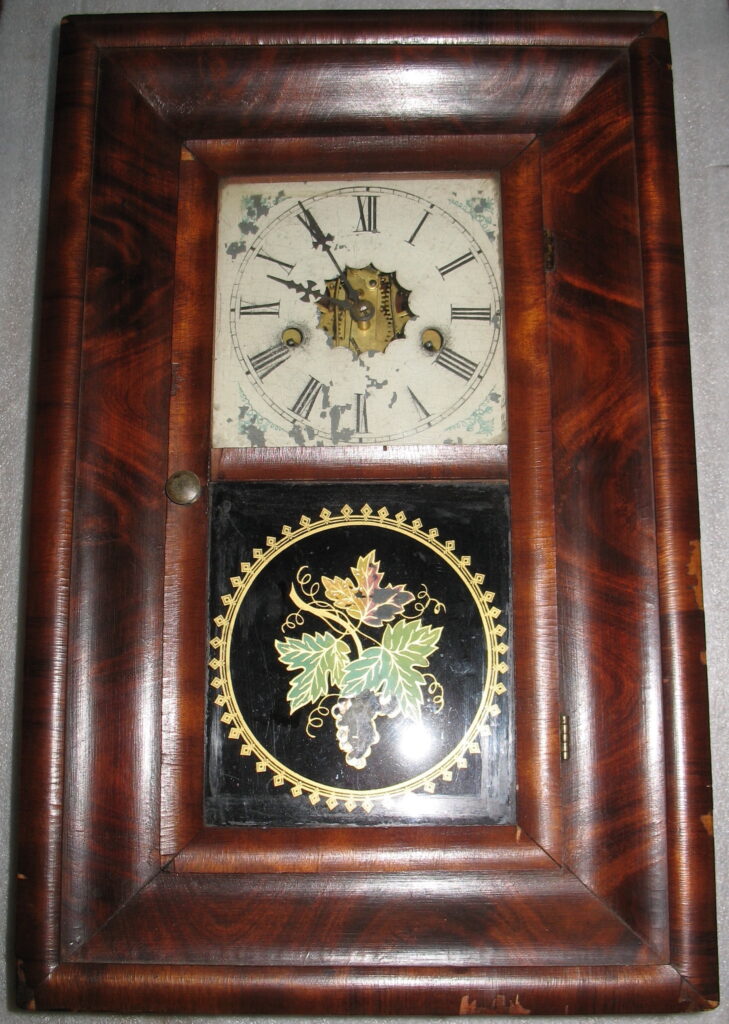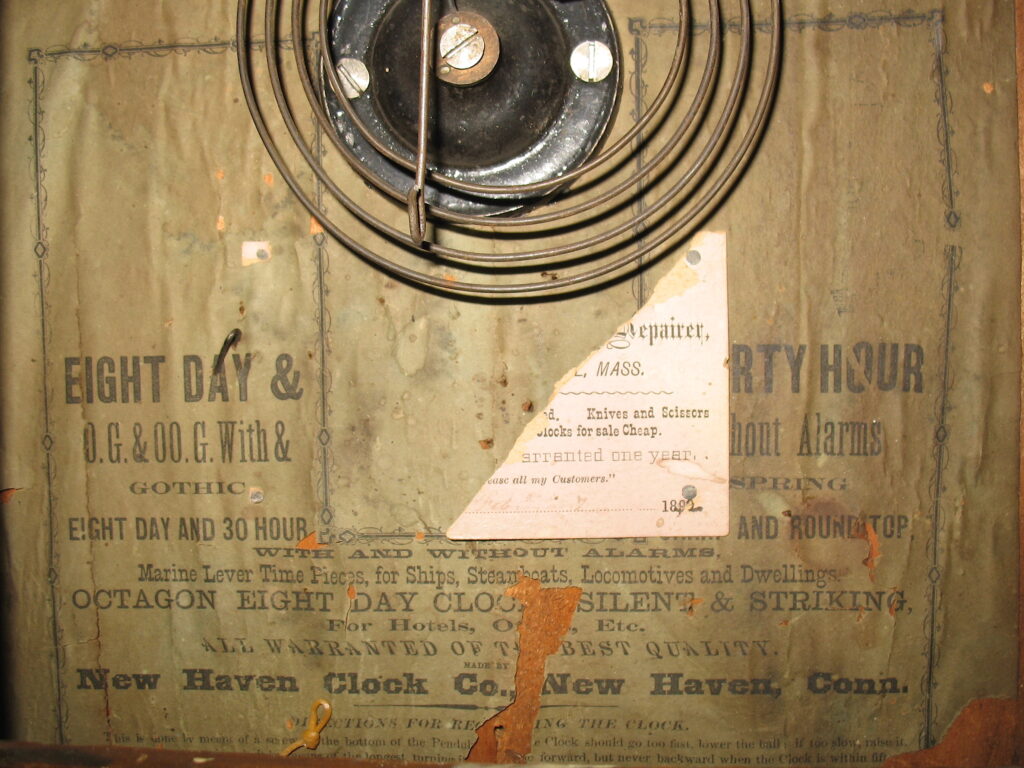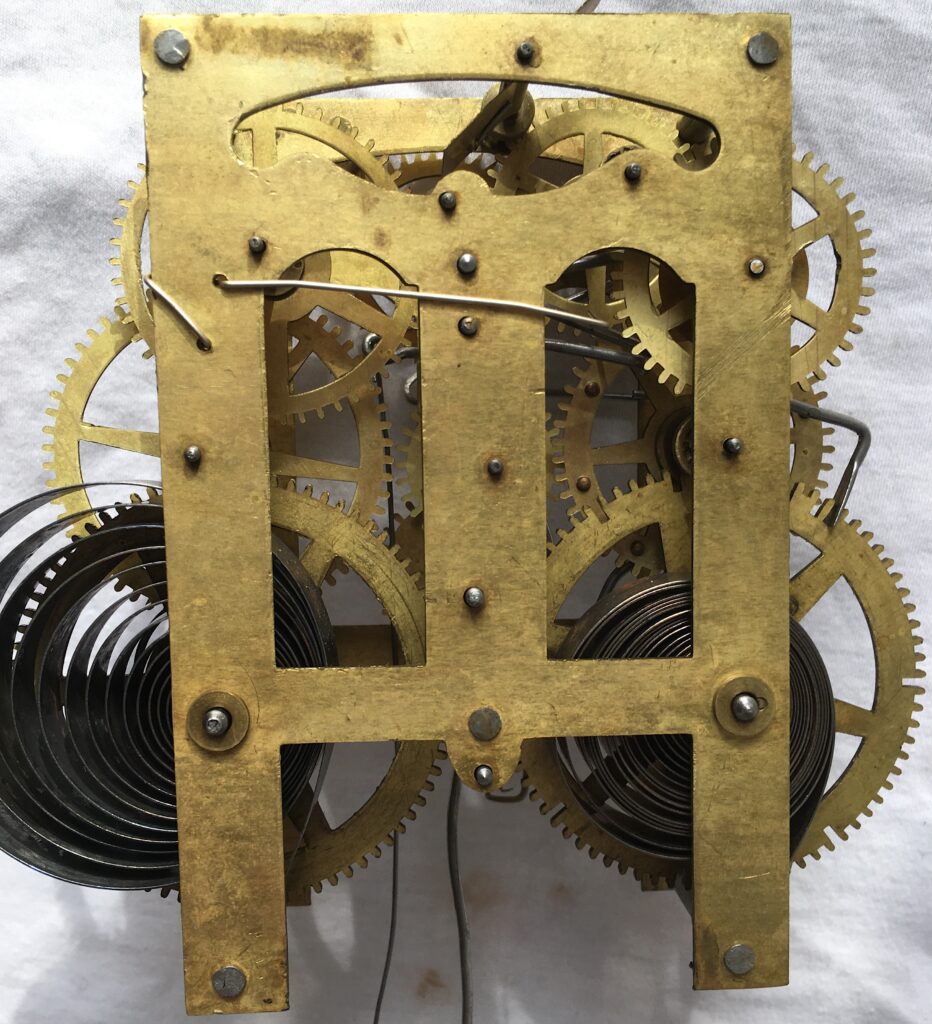This mini ogee (or more properly, double ogee) likely dates to the early 1870s. Ogee refers to the style of case that has a convex-concave (S-curve) front. An ogee has flat molding around the door frame and the outer edge of the case, whereas a double ogee (OOG) has concave molding around the door frame and convex molding around the edge of the case.
The label is similar (but not identical) to ones found in many Jerome shelf clocks from the 1850s and many New Haven clocks through the 1860s. However, the earlier New Haven labels were printed by John Benham, whereas this later ogee label was printed by F.L. Goddard. Goddard was apparently active for only a couple of years in the early 1870s, ending with his death in 1873. Tacked on top of the label is the remnant of what is likely a repair tag from the 1890s (possibly 1892).
View showing the printer’s line stating “Goddard Print[] New Haven, Conn.”
30-hr, spring-driven movement made by the New Haven Clock Co. This was a standard movement used in late Jerome and New Haven clocks extending at least into the 1870s. Versions made after approximately 1870, like this one, have a tapered escape wheel bridge. Aside from the shape of the escape wheel bridge, New Haven apparently made no changes in this movement over the course of 20 or more years. Compare this movement with the ones in the other New Haven mini ogee (from the late 1850s) and the earlier Jerome steeple (from the early to mid-1850s).
Rear view of movement. Note the jury-rigged paperclip added by a previous repair person as a spring assist to the count hook.




